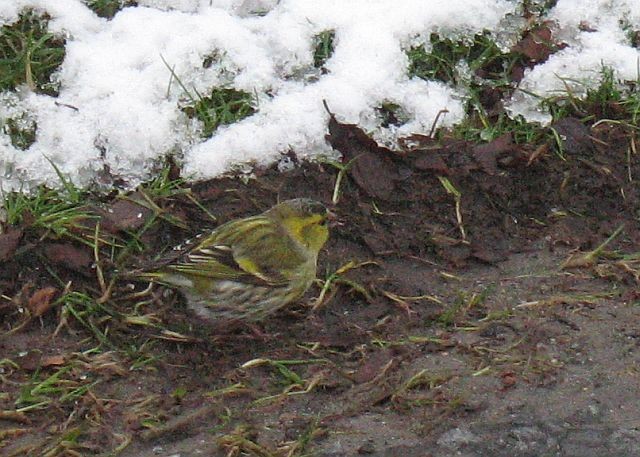Eurasian Siskin
A species of Siskins and new world goldfinches, Also known as Common Siskin Scientific name : Spinus spinus Genus : Siskins and new world goldfinches
Eurasian Siskin, A species of Siskins and new world goldfinches
Also known as:
Common Siskin
Botanical name: Spinus spinus
Genus: Siskins and new world goldfinches
Content
Description People often ask General Info
 Photo By Richard Webb , used under CC-BY-SA-2.0 /Cropped and compressed from original
Photo By Richard Webb , used under CC-BY-SA-2.0 /Cropped and compressed from original Description
The small finch’s bright yellow feather makes it easy to spot the eurasian Siskin in forests and woodlands. The vocal bird also appears in gardens with seed feeders. In the fall and winter, the finch typically gathers by food sources in large flocks. It’s not uncommon to see the finch hanging upside down on a branch as it works to remove seeds from pinecones.
Size
12 cm
Life Expectancy
11 years
Nest Placement
Tree
Feeding Habits
Eurasian Siskin primarily consumes seeds, favoring those from deciduous trees like birch and alder in autumn and winter. They forage in cultivated and pasture areas, eating seeds of Compositae and herbaceous plants. Insect intake, mainly beetles, increases when feeding chicks due to protein needs.
Habitat
The eurasian Siskin primarily inhabits boreal and temperate coniferous forests—spruce, fir, and pine are notable for breeding. These birds prefer dense woods, especially at higher, humid altitudes, but also occupy mixed woodlands with both deciduous and conifer trees. Outside the breeding season, they adapt to various landscapes, including orchards, riverside thickets, and tree-rich parks, expanding to coastal and open areas with scattered trees up to 2000 meters in elevation.
Dite type
Granivorous
People often ask
General Info
Feeding Habits
Bird food type
Bird Feeder Type

Small Tube Feeder
Behavior
They are very active and restless birds. They are also very social, forming small cohesive flocks especially in autumn and winter. They are fairly trusting of humans, it being possible to observe them from a short distance. During the breeding season, however, they are much more timid, solitary and difficult to observe. 
Distribution Area
This species can be found across the greater part of Eurosiberia and the north of Africa. Its breeding area is separated into two zones, each side of the Palearctic ecozone: the east coast of Asia and the central and northern part of Europe. These birds can be found throughout the year in Central Europe and some mountain ranges in the south of the continent. They are present in the north of Scandinavia and in Russia and they over-winter in the Mediterranean basin and the area around the Black Sea. In China they breed in the Khingan Mountains of Inner Mongolia and in Jiangsu province; they spend winter in Tibet, Taiwan, the valleys of the lower Yangtse River and the south east coast. 
Species Status
The worldwide population of the siskin is estimated as between 20 and 36 million. The European population is estimated as between 2.7 and 15 million pairs. There does not seem to be a major decline in population numbers and for this reason the IUCN has listed their conservation status as Least Concern. The siskin appears in Annex II of the Berne Convention as a protected bird species. 